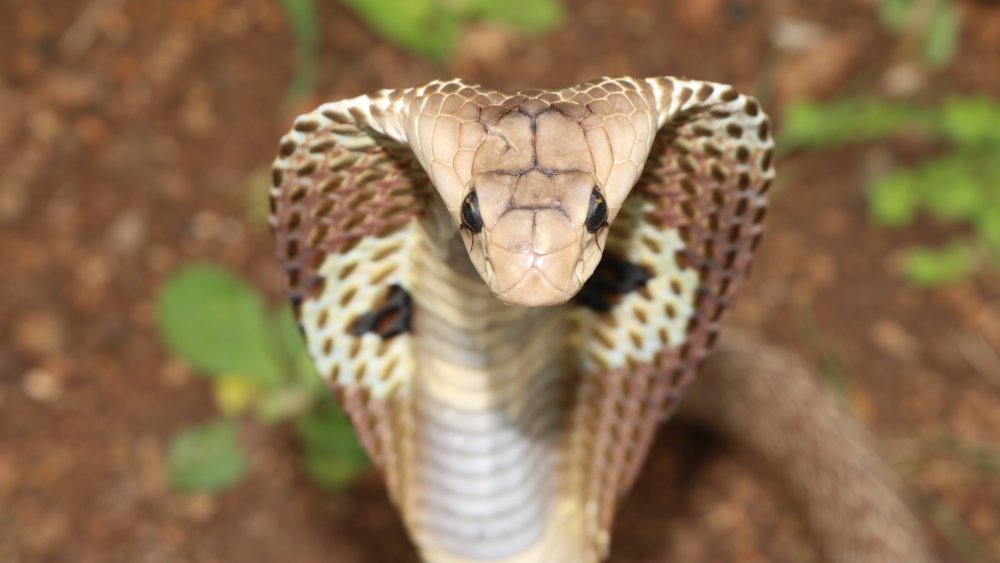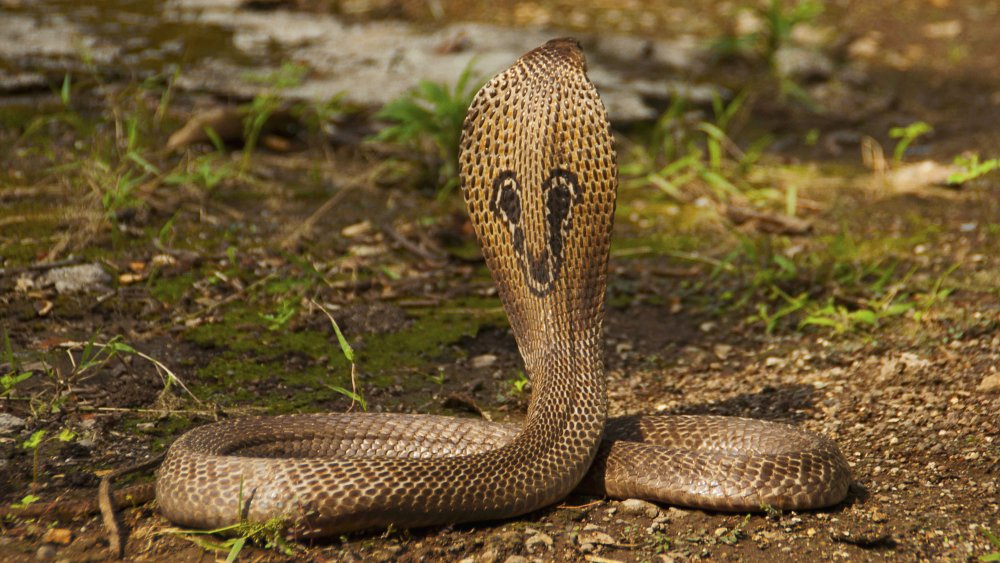Inside Missouri's Indian Cobra Scare Of 1953
Plenty of snakes are commonly found in Missouri, per the Missouri Department of Conservation, including such favorites as the prairie kingsnake, the Eastern yellow-bellied racer, and the Plains hog-nosed snake. In 1953, however, the residents of the town of Springfield were surprised and dismayed to find themselves cohabiting with a slew of Indian cobras. According to Atlas Obscura, between August and October of that year, at least 11 Indian cobras were killed or captured around Springfield, Missouri. Several residents found the slithering intruders in their yards and fought back with garden hoes. Animalia describes Indian cobras as "large highly venomous snakes," and one of the "'big four' species that inflict the most snakebites on humans in India." Native to southeast Asia, they are "can be found throughout India, Pakistan, Sri Lanka, Bangladesh, and southern Nepal," often near water. But Missouri? Not so much.
So how did so many of them end up in the Show-Me State? After the first two snakes appeared in neighboring yards and were identified by a local science teacher, authorities visited the Mowrer Animal Company, a local pet shop just a block away from where the cobras were found. Owner Reo Mowrer acknowledged that he kept cobras, but denied that any of them had recently escaped. As weeks went on, more and more cobras appeared around town, with Mowrer himself capturing the sixth escapee near his pet shop. Four snakes were dispatched via the business ends of garden hoes, and one was run over "repeatedly."
Eleven snakes later ...
The discovery of the seventh cobra was especially dramatic. A man saw a cobra head under his house and (very sensibly) called the police. Officers created a "snake catcher" out of a rope noose attached to a pole. When that didn't work, they escalated efforts by throwing a tear gas grenade under the house, shooting the cobra five times (ineffectually), and eventually finishing the job with, yes, a hoe. Three more snakes were killed via a rock, another hoe, and an undisclosed method, possibly helped along by the city's health inspector driving around the town "blaring so-called 'snake-charming' music." The 11th (and final) snake was captured on October 25, 1953, and taken to a local zoo, where it died just two months later.
Until his dying day in the 1970s, Reo Mowrer denied any involvement in Springfield's great cobra invasion. No one knew the truth until 1988, at which point Carl Barnett contacted the Springfield News-Leader and admitted, "I'm the one who done it." Just 14 years old in 1953, Barnett had received an exotic fish from Mower as part of a trade. When the fish quickly died, Barnett attempted to return it, but Mowrer was unsympathetic. Leaving the shop, Barnett "saw a crate of snakes out back, and assumed they were harmless," and released them, "figuring he and the shop were even." Barnett kept his secret for 35 long years, only admitting the truth after being assured by an attorney that he wouldn't face charges.

